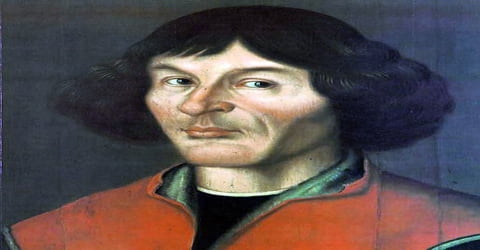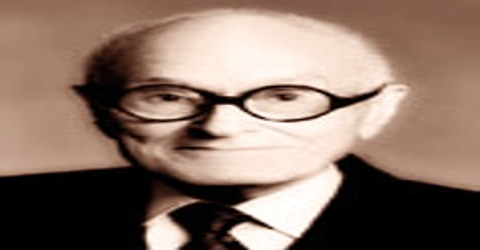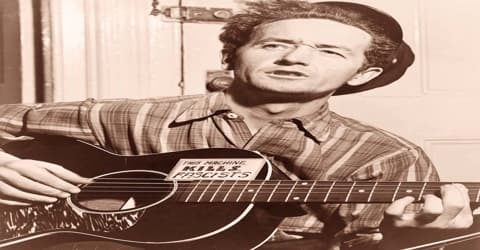Biography of Nicolaus Copernicus
Nicolaus Copernicus – Renaissance-era mathematician and Astronomer.
Name: Nicolaus Copernicus
Date of Birth: 19 February 1473
Place of Birth: Toruń (Thorn), Royal Prussia, Kingdom of Poland
Date of Death: 24 May 1543 (aged 70)
Place of Death: Frombork (Frauenburg), Prince-Bishopric of Warmia, Royal Prussia, Kingdom of Poland
Career: Astronomy, Canon law, Economics, Mathematics, Medicine, Politics
Early Life

Nicolaus Copernicus (/koʊˈpɜːrnɪkəs, kə-/; Polish: Mikołaj Kopernik; German: Nikolaus Kopernikus; Niklas Koppernigk) was born on February 19, 1473, in Torun, Poland, about 100 miles south of Danzig. He was a Renaissance-era mathematician and astronomer who formulated a model of the universe that placed the Sun rather than the Earth at the center of the universe, in all likelihood independently of Aristarchus of Samos, who had formulated such a model some eighteen centuries earlier.
His father was a wealthy merchant, who was also politically active in supporting Poland against the Teutonic Order, and he played a leading role in peace negotiations between the two factions. His mother’s family was also very wealthy and influential making Copernicus well connected throughout his life.
His uncle, the bishop, and ruler of Ermland was the person to whom Copernicus owed his education, career, and security.
Copernicus studied at the University of Cracow from 1491 to 1494. While he did not attend any classes in astronomy, it was during his student years there that Copernicus began to collect books on mathematics and astronomy (the study of the universe). Copernicus returned to Torun in 1494. In 1496, through the efforts of his uncle, he became a canon (priest) at Frauenburg, remaining in that office for the remainder of his life. Copernicus then set out for Bologna, Italy, to study canon law. In Bologna Copernicus came under the influence of Domenico Maria de Novara, an astronomer. There Copernicus also recorded some planetary positions, and he did the same in Rome, where he spent the year of 1500.
Copernicus was born and died in Royal Prussia, a region that had been part of the Kingdom of Poland since 1466. A polyglot and polymath, he obtained a doctorate in canon law and was also a mathematician, astronomer, physician, classics scholar, translator, governor, diplomat, and economist. In 1517 he derived a quantity theory of money – a key concept in economics – and in 1519 he formulated an economic principle that later came to be called Gresham’s law.
Around 1514, he shared his findings in the Commentariolus. His second book on the topic, De revolutionibus orbium coelestium, was banned by the Roman Catholic Church decades after his May 24, 1543 death in Frombork.
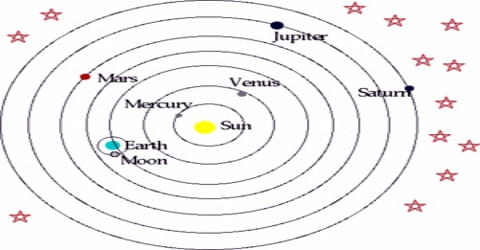
Copernicus made three observations of Mercury, with errors of -3, -15 and -1 minute of arc. He made one of Venus, with an error of -24 minutes. Four were made of Mars, with errors of 2, 20, 77, and 137 minutes. Four observations were made of Jupiter, with errors of 32, 51, -11 and 25 minutes. He made four of Saturn, with errors of 31, 20, 23 and -4 minutes.
Childhood, Family and Educational Life

Nicolaus Copernicus was born on 19 February 1473 in the city of Thorn (modern Toruń), in the province of Royal Prussia, in the Crown of the Kingdom of Poland. His father was a merchant from Kraków and his mother was the daughter of a wealthy Toruń merchant. Nicolaus was the youngest of four children. His brother Andreas (Andrew) became an Augustinian canon at Frombork (Frauenburg). His sister Barbara, named after her mother, became a Benedictine nun and, in her final years, prioress of a convent in Chełmno (Kulm); she died after 1517. His sister Katharina married the businessman and Toruń city councilor Barthel Gertner and left five children, whom Copernicus looked after to the end of his life. Copernicus never married and is not known to have had children, but from at least 1531 until 1539 his relations with Anna Schilling, a live-in housekeeper, were seen as scandalous by two bishops of Warmia who urged him over the years to break off relations with his “mistress”.
Nicolaus was named after his father, who appears in records for the first time as a well-to-do merchant who dealt in copper, selling it mostly in Danzig (Gdańsk).
Copernicus’s father married Barbara Watzenrode, the astronomer’s mother, between 1461 and 1464. He died about 1483.
After the death of his father, Copernicus was given a full education by his maternal uncle. Copernicus became prolific in several languages, including spoken Latin, German, Polish, Greek, and Italian. He studied at the Cathedral School at Wloclawek and the University of Krakow. Copernicus’ studies included astronomy and mathematics, Aristotelian philosophy and Aristotelian natural-sciences.
Copernicus supplemented his studies with his own private reading, including works by Euclid, Pythagoras, Plutarch, Ptolemy and many works related to astronomy.
Copernicus is postulated to have spoken Latin, German, and Polish with equal fluency; he also spoke Greek and Italian and had some knowledge of Hebrew. The vast majority of Copernicus’s extant writings are in Latin, the language of European academia in his lifetime.
The surname Kopernik, Copernik, Koppernigk is recorded in Kraków from c. 1350, in various spellings, apparently given to people from the village of Koperniki (prior to 1845 rendered Kopernik, Copernik, Copirnik, and Koppirnik) in the Duchy of Nysa. Nicolas Copernicus’ great-grandfather is recorded as having received citizenship in Kraków in 1386. The toponym Kopernik (modern Koperniki) has been variously tied to the Polish word for dill (Koper) and German for copper (Kupfer). The suffix -nik (or plural -niki) denotes a Slavic and Polish agent noun, though.
During his three-year stay at Bologna, between fall 1496 and spring 1501, Copernicus seems to have devoted himself less keenly to studying canon law (he received his doctorate in law only after seven years, following a second return to Italy in 1503) than to studying the humanities—probably attending lectures by Filippo Beroaldo, Antonio Urceo, called Codro, Giovanni Garzoni, and Alessandro Achillini—and to studying astronomy. He met the famous astronomer Domenico Maria Novara da Ferrara and became his disciple and assistant.
In mid-1501 he studied at the University of Padua, famous as a seat of medical learning, and—except for a brief visit to Ferrara in May–June 1503 to pass examinations for, and receive, his doctorate in canon law—he remained at Padua from fall 1501 to summer 1503.
In 1503, Copernicus returned to Poland where he served as secretary to his uncle who was the Prince-Bishop of Warmia. In this capacity, he also became involved in diplomatic negotiations over the ongoing tensions between Prussia and the Teutonic Order.
Upon returning to Ermland in 1506, Copernicus stayed in his uncle’s castle at Heilsberg as his personal physician (doctor) and secretary. During that time he translated from Greek into Latin the eighty-five poems of Theophylactus Simacotta, the seventh-century poet. The work, printed in Cracow in 1509, demonstrated Copernicus’s interest in the arts.
Works
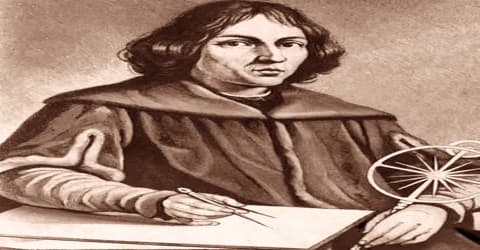
Having completed all his studies in Italy, 30-year-old Copernicus returned to Warmia, where he would live out the remaining 40 years of his life, apart from brief journeys to Kraków and to nearby Prussian cities: Toruń (Thorn), Gdańsk (Danzig), Elbląg (Elbing), Grudziądz (Graudenz), Malbork (Marienburg), Königsberg (Królewiec).
The Prince-Bishopric of Warmia enjoyed substantial autonomy, with its own diet (parliament) and monetary unit (the same as in the other parts of Royal Prussia) and treasury.
Copernicus was his uncle’s secretary and physician from 1503 to 1510 (or perhaps till his uncle’s death on 29 March 1512) and resided in the Bishop’s castle at Lidzbark (Heilsberg), where he began work on his heliocentric theory.
In 1504–12 Copernicus made numerous journeys as part of his uncle’s retinue—in 1504, to Toruń and Gdańsk, to a session of the Royal Prussian Council in the presence of Poland’s King Alexander Jagiellon; to sessions of the Prussian diet at Malbork (1506), Elbląg (1507) and Sztum (Stuhm) (1512); and he may have attended a Poznań (Posen) session (1510) and the coronation of Poland’s King Sigismund I the Old in Kraków (1507). Watzenrode’s itinerary suggests that in spring 1509 Copernicus may have attended the Kraków Sejm.
At this time Copernicus was thinking about problems of astronomy, and the heliocentric system in particular. The system is outlined in a short manuscript known as the Commentariolus, or small commentary, which he completed about 1512. In it, there was a list of seven axioms (truths), all of which stated a feature specific to the heliocentric system. The third stated in particular: “All the spheres revolve about the sun as their midpoint, and therefore the sun is the center of the universe.”
In 1513 Copernicus’ dedication prompted him to build his own modest observatory. Nonetheless, his observations did, at times, lead him to form inaccurate conclusions, including his assumption that planetary orbits occurred in perfect circles. As German astronomer Johannes Kepler would later prove, planetary orbits are actually elliptical in shape.
Around 1514, Copernicus completed a written work, Commentariolus (Latin for “Small Commentary”), a 40-page manuscript which summarized his heliocentric planetary system and alluded to forthcoming mathematical formulas meant to serve as proof.
The sketch set forth seven axioms, each describing an aspect of the heliocentric solar system: 1) Planets don’t revolve around one fixed point; 2) The earth is not at the center of the universe; 3) The sun is at the center of the universe, and all celestial bodies rotate around it; 4) The distance between the Earth and the Sun is only a tiny fraction of stars’ distance from the Earth and Sun; 5) Stars do not move, and if they appear to, it is only because the Earth itself is moving; 6) Earth moves in a sphere around the Sun, causing the Sun’s perceived yearly movement; and 7) Earth’s own movement causes other planets to appear to move in the opposite direction.
In 1517, he created the first attempt at a quantity theory of money – Inflation was related to the amount of money in circulation; this became a principal element of economic theory. It was important for that particular time period, where governments struggled with currency devaluation. His writings on economics became influential for both Prussia and Germany (Teutonic states).
In the difficult, politically complex situation of Warmia, threatened externally by the Teutonic Order’s aggressions (attacks by Teutonic bands; the Polish-Teutonic War of 1519–21; Albert’s plans to annex Warmia), internally subject to strong separatist pressures (the selection of the prince-bishops of Warmia; currency reform), he, together with part of the chapter, represented a program of strict cooperation with the Polish Crown and demonstrated in all his public activities (the defense of his country against the Order’s plans of conquest; proposals to unify its monetary system with the Polish Crown’s; support for Poland’s interests in the Warmia dominion’s ecclesiastic administration) that he was consciously a citizen of the Polish-Lithuanian Republic. Soon after the death of uncle Bishop Watzenrode, he participated in the signing of the Second Treaty of Piotrków Trybunalski (7 December 1512), governing the appointment of the Bishop of Warmia, declaring, despite opposition from part of the chapter, for loyal cooperation with the Polish Crown.
In 1522 the secretary to the King of Poland asked Copernicus to pass an opinion on De Motu octave Spherae (On the Motion of the Eighth Sphere), just published by Johann Werner, a mathematician. This time he granted the request in the form of a letter in which he took a rather low opinion of Werner’s work. More important was the closing of the letter, in which Copernicus stated that he intended to present his own opinion about the motion of the stars.
Copernicus could pursue his study only in his spare time. As a canon, he was involved in various affairs, including legal and medical, but especially administrative and financial matters. For all his failure to publish anything in astronomy, his manuscript studies presented in Commentariolus continued to circulate, and more and more was rumored about his theory.
In 1533, Johann Widmanstetter, secretary to Pope Clement VII, explained Copernicus’s heliocentric system to the Pope and two cardinals. The Pope was so pleased that he gave Widmanstetter a valuable gift. In 1535 Bernard Wapowski wrote a letter to a gentleman in Vienna, urging him to publish an enclosed almanac, which he claimed had been written by Copernicus. This is the only mention of a Copernicus almanac in the historical records. The “Almanac” was likely Copernicus’s tables of planetary positions. Wapowski’s letter mentions Copernicus’s theory about the motions of the earth. Nothing came of Wapowski’s request, because he died a couple of weeks later.
Following the death of Prince-Bishop of Warmia Mauritius Ferber (1 July 1537), Copernicus participated in the election of his successor, Johannes Dantiscus (20 September 1537). Copernicus was one of four candidates for the post, written in at the initiative of Tiedemann Giese; but his candidacy was actually pro forma since Dantiscus had earlier been named coadjutor bishop to Ferber and since Dantiscus had the backing of Poland’s King Sigismund I.
Not all the comments were flattering, though. German religious reformer Martin Luther (1483–1546) said Copernicus was “the fool who will turn the whole science of astronomy upside down.” In 1533 John Widmanstad, a secretary to the pope, lectured on Copernicus’s theory before Pope Clement VII (1536–1605) and several cardinals (religious leaders ranking just below the pope). Widmanstad’s hand was behind the letter that Cardinal Schönberg sent from Rome to Copernicus in 1536 urging him to publish his thoughts or to share them with him at least.
Copernicus was still working on De revolutionibus orbium coelestium (even if not certain that he wanted to publish it) when in 1539 Georg Joachim Rheticus, a Wittenberg mathematician, arrived in Frombork. Philipp Melanchthon, a close theological ally of Martin Luther, had arranged for Rheticus to visit several astronomers and study with them. Rheticus became Copernicus’s pupil, staying with him for two years and writing a book, Narratio prima (First Account), outlining the essence of Copernicus’s theory. In 1542 Rheticus published a treatise on trigonometry by Copernicus (later included as chapters 13 and 14 of Book I of De revolutionibus).
Death and Controversy
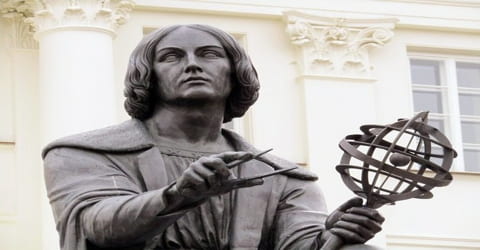
Toward the close of 1542, Copernicus was seized with apoplexy and paralysis, and he died at age 70 on 24 May 1543. Legend has it that he was presented with the final printed pages of his Dē revolutionibus orbium coelestium on the very day that he died, allowing him to take farewell of his life’s work. He is reputed to have awoken from a stroke-induced coma, looked at his book, and then died peacefully.
Copernicus raised a fair share of controversy with Commentariolus and De revolutionibus orbium coelestium (“On the Revolutions of the Heavenly Spheres”), with the second work published right before his death. His critics claimed that he failed to solve the mystery of the parallax — the seeming displacement in the position of a celestial body, when viewed along varying lines of sight — and that his work lacked a sufficient explanation for why the Earth orbits the Sun.
Copernicus’ theories also incensed the Roman Catholic Church and were considered heretical. When De revolutionibus orbium coelestium was published in 1543, religious leader Martin Luther voiced his opposition to the heliocentric solar system model. His underlying, Lutheran minister Andreas Osiander, quickly followed suit, saying of Copernicus, “This fool wants to turn the whole art of astronomy upside down.”
Copernicus was reportedly buried in Frombork Cathedral, where a 1580 epitaph stood until being defaced; it was replaced in 1735. For over two centuries, archaeologists searched the cathedral in vain for Copernicus’ remains. Efforts to locate them in 1802, 1909, 1939 had come to nought. In 2004 a team led by Jerzy Gąssowski, head of an archaeology and anthropology institute in Pułtusk, began a new search, guided by the research of historian Jerzy Sikorski. In August 2005, after scanning beneath the cathedral floor, they discovered what they believed to be Copernicus’s remains.
The discovery was announced only after further research, on 3 November 2008. Gąssowski said he was “almost 100 percent sure it is Copernicus”. Forensic expert Capt. Dariusz Zajdel of the Polish Police Central Forensic Laboratory used the skull to reconstruct a face that closely resembled the features—including a broken nose and a scar above the left eye—on a Copernicus self-portrait. The expert also determined that the skull belonged to a man who had died around age 70—Copernicus’s age at the time of his death.
The grave was in poor condition, and not all the remains of the skeleton were found; missing, among other things, was the lower jaw. The DNA from the bones found in the grave matched hair samples taken from a book owned by Copernicus which was kept at the library of the University of Uppsala in Sweden.
On 22 May 2010, Copernicus was given a second funeral in a Mass led by Józef Kowalczyk, the former papal nuncio to Poland and newly named Primate of Poland. Copernicus’s remains were reburied in the same spot in Frombork Cathedral where part of his skull and other bones had been found. A black granite tombstone now identifies him as the founder of the heliocentric theory and also a church canon. The tombstone bears a representation of Copernicus’s model of the solar system—a golden sun encircled by six of the planets.
For sixty years after his death, only a small number of astronomers and intellectuals accepted Copernicus’s heliocentric viewpoint. However, on the publication of his thesis, there was little controversy and no real criticism from the church.
Galileo’s (1564-1642) work in astronomy made him come to the conclusion Copernicus was right. In particular, it was Galileo (with the use of improved telescopes) who found moons orbiting the planet Jupiter; this was a justification for Copernicus’ view. But as Galileo advanced the view of heliocentrism, he received considerable opposition from the Catholic Church, and he became convicted of heresy on the basis that heliocentrism was contrary to the sense and authority of Holy Scripture. Galileo was placed under house arrest for many years. But, Galileo played a key role in seeing heliocentrism accepted as scientific fact.
Copernicus’ De revolutionibus and Galileo’s Dialogue Concerning the Two Chief World Systems were placed on the Catholic Church’s prohibited list until 1835.
Information Source:
